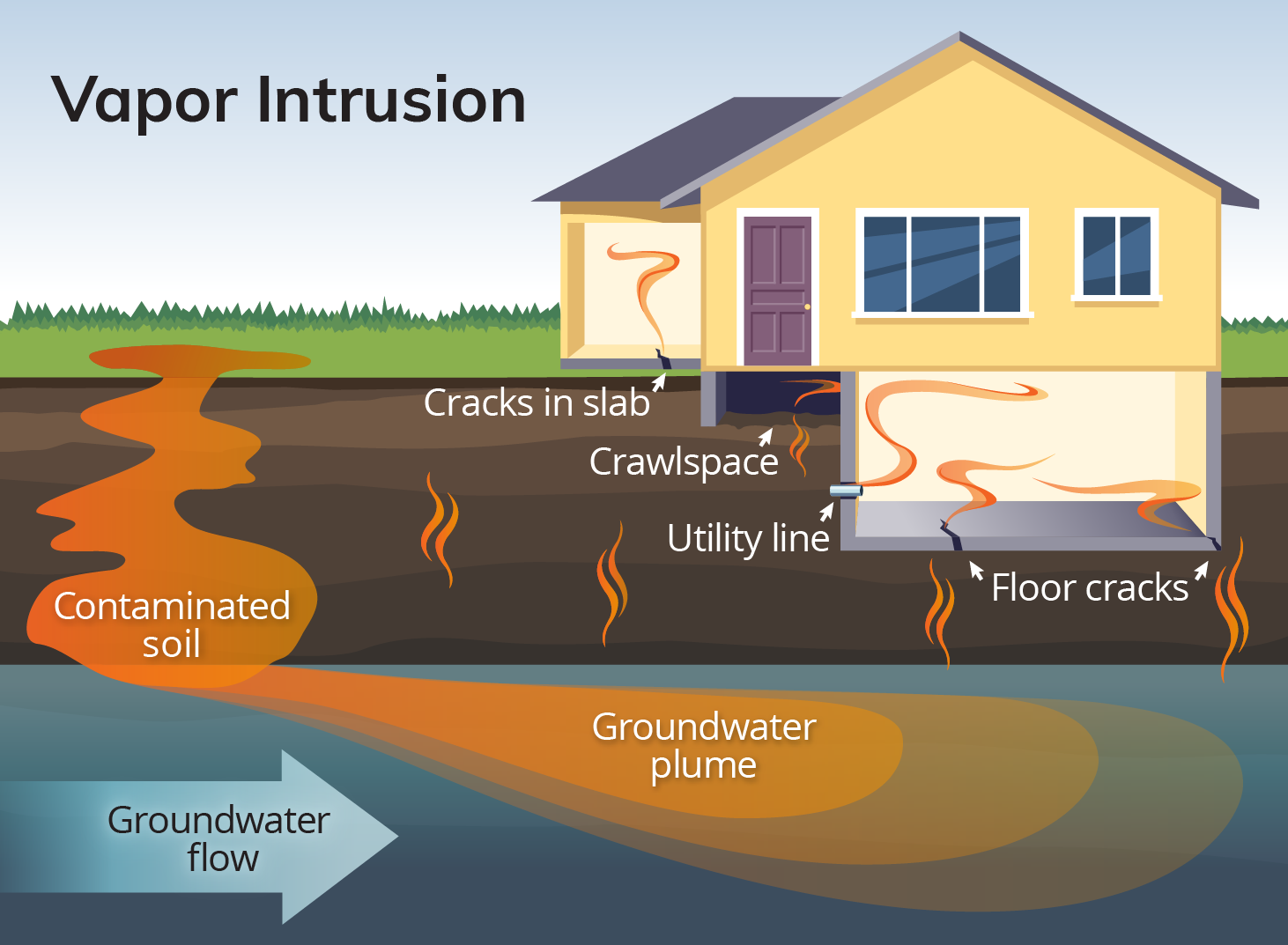What is vapor intrusion?
Volatile organic compounds (VOCs) in the shallowest groundwater (the water table) can evaporate and move through the soil as a gas. Under certain conditions, these vapors can make their way indoors, affecting air quality in buildings above the ground.
Groundwater impacted by VOCs like trichloroethene (TCE) and vinyl chloride can release small amounts of vapor into the soil. These vapors rise toward the surface of the ground through gaps between soil particles. These VOCs are chemicals found in many common household products like stain removers, upholstered furniture, and cigarette smoke.
Although VOCs are common and in the air of just about every indoor setting, ensuring that contamination doesn’t add to what may already be present is an important part of cleanup and keeping people safe.
Specific conditions required
Under certain conditions, soil vapors that reach building foundations can move inside the building. They can build up in the air in enclosed areas, such as crawl spaces. Whether the vapors enter the building and how much they might impact indoor air quality depends on many factors. These factors include:
- The building’s ventilation
- How concentrated the groundwater contamination is
- Soil conditions above the water table
- The type of foundation a building has — slab, crawl space, or basement
- The integrity of a building’s foundation
What do we look for?
When VOCs contaminate groundwater at a cleanup site, we test the groundwater regularly. These tests tell us if indoor air quality might be impacted. If so, the next step is testing the air in potentially affected buildings, then treatment if the tests show they are above pre-defined thresholds.Many common products create the same kind of air quality issues we look for when we investigate vapor intrusion. The tests we use are sensitive enough that we need to be sure the testing environment is free of things like cigarette smoke, dry-cleaned clothing, certain paints, or acetone-based fingernail polish remover. We look for very small amounts of chemicals to be sure that people who are exposed for many hours a day over many years will not be effected by vapor intrusion.
What is the remedy?
Typically, the solution to a vapor intrusion problem is simple: increased ventilation. The amount of time a chemical stays in the air depends on how quickly fresh air enters the room and the amount of chemicals used. Levels of VOCs will decrease faster if you open windows or doors, or use exhaust fans. Vapors are vented outside of the buildings, where they become dispersed and harmless.Related links
Contact information
Tom Middleton
Site Manager
Tom.Middleton@ecy.wa.gov
360-407-7263


